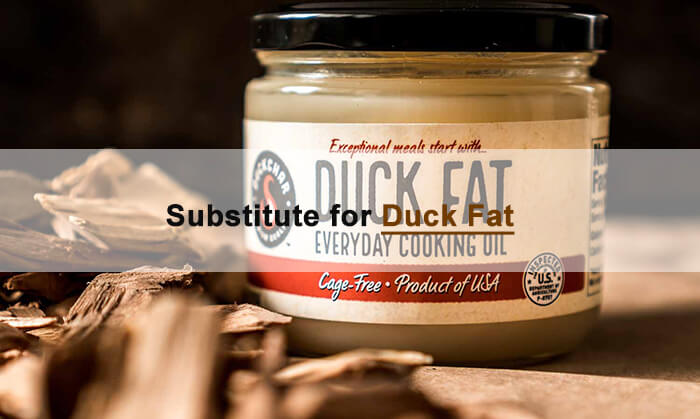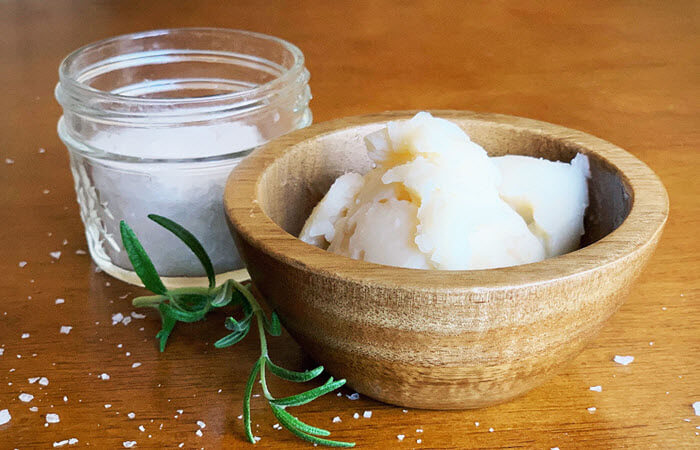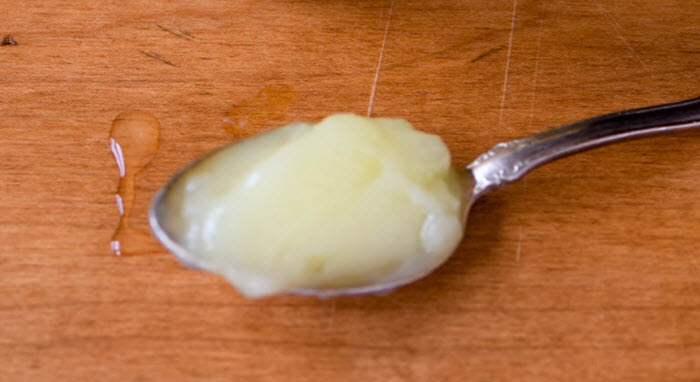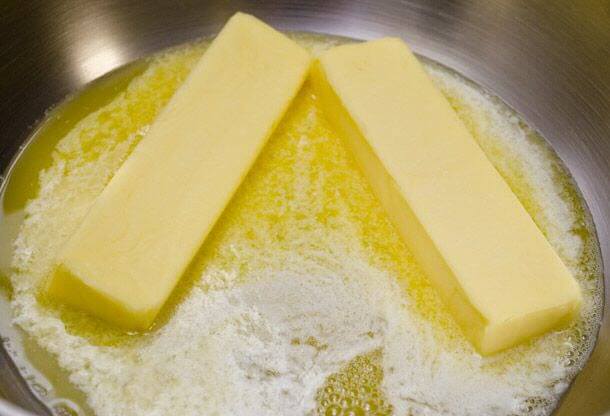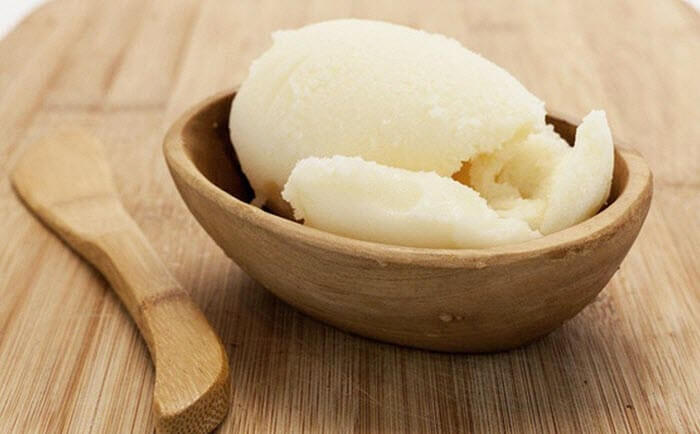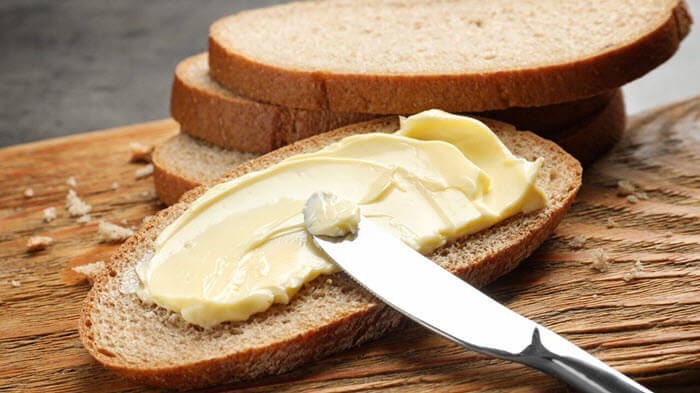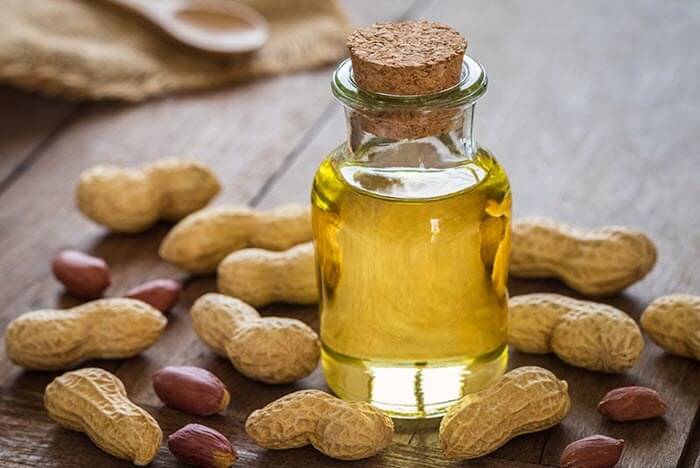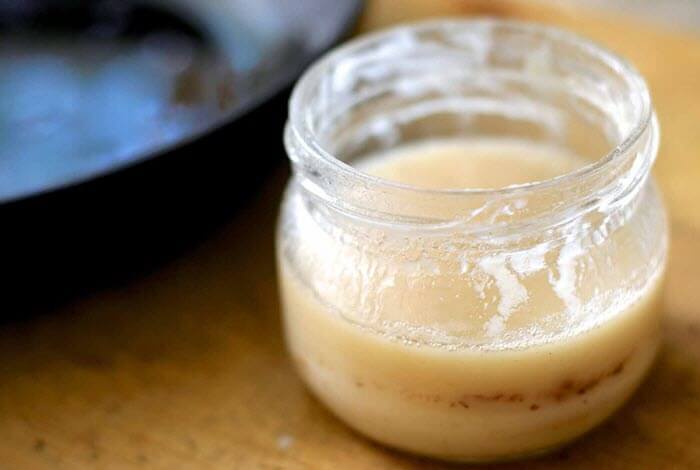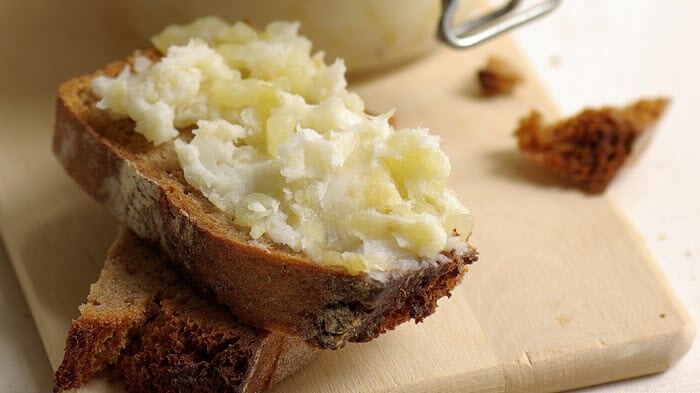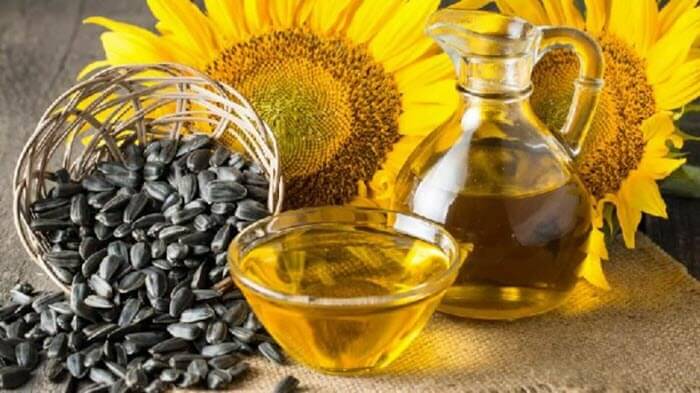What does duck fat do? Well, it enhances the flavor of many different types of foods. The properties of duck fat are quite similar to that of olive oil, only it’s known to be healthier, and more flavorful, and you can use it on a number of different dishes.
If you’re looking for a duck fat substitute, you’ll want to stay tuned.
Table Of Contents
What Can You Substitute for Duck Fat
Fortunately for those who don’t have duck fat on hand, there are a number of substitutes that you can try.
Duck Fat Substitute | ||
Vegetarian | Vegan | Cooking |
1. Ghee 2. Peanut Oil | 1. Olive Oil 2. Sunflower Oil 3. Extra Virgin Olive Oil | 1.Goose Fat |
1. Ghee
In Indian cooking, Ghee is one of the most popular ingredients that people use.
When you go to melt butter and simmer it, the solids will separate from the liquid fats in it. After that, the milk solids can be strained out, and you’re left with Ghee, which is an oil with a golden hue that is perfect for dipping, roasting, and sautéing.
Ghee also comes packed with a bunch of vitamins and nutrients. You can find Vitamin E, A, and other essential omega-3 fatty acids packed into this delicious substitute for duck fat. You’ll also find antioxidants like selenium in it.
Ghee is also free of lactose once it has been cooked down. It’s easily digestible and perfect for those on a paleo diet.
Further reading: Vegan & Non-vegan Substitutes for Ghee in Indian Cooking
2. Lard
Lard is the fat that comes from a pig, and it’s been a staple ingredient in many people’s diets for centuries.
Until the 20th century, lard was very popular, but it decreased in popularity after that point because people started to fear its health consequences and began turning to alternatives.
Lard is a great substitute for duck fat and has about 40% less saturated fat in comparison to butter. It also has about half of the amount of saturated fat in comparison to coconut oil.
The two main types of lard are back fat and leaf lard.
- With leaf lard, it’s originating from the loin and the kidneys, and that results in somewhat of a lackluster flavor profile.
- With back lard, it’s more flavorful, making it ideal for roasting and frying.
3. Tallow
A rendering of animal fat, tallow is a fairly thick and semisolid substance that’s traditionally used as an ingredient in many different things, ranging from soap, all the way to candles. It’s made by boiling the fatty tissues of animals, then straining and cooling the mixture.
This process helps separate the fat from the connective tissue. You may have heard of tallow as it relates to beef—tallow is a type of suet, which are the fatty deposits around an animal’s organs.
There are actually two different types of tallow: yellow grease, which comes from the fat on cattle; and white grease, which comes from sheep. Each of these different types is used for cooking because it has a high smoke point.
You may like: What’s the Difference Between Tallow and Lard?
4. Chicken Fat
Chicken fat is a source of nutrition and a very flavorful addition to a lot of different foods. It’s used in recipes around the world but has fallen out of favor in recent years due to its high saturated fat content.
There are many different kinds of chicken fat available for use. Chicken fat consists of equal parts monounsaturated and polyunsaturated fat, with a small amount of saturated fat. It’s also quite high in cholesterol, which can raise LDL blood cholesterol levels if consumed in large quantities.
The health benefits of chicken fat outweigh the risks in many cases.
Some studies have shown that saturated fats, like those found in chicken fat, do not increase the risk of heart disease as much as previously thought. However, it’s still important to consume these fats in moderation.
5. Coconut Oil
The uses for coconut oil are far-reaching and varied. From skin care to hair care, it’s beneficial in a number of ways.
So what is coconut oil exactly? It’s an edible oil that comes from the meat of mature coconuts.
When you open a brown coconut and drain the liquid, the remaining white “meat” is where this oil comes from. It can be either refined or unrefined—the latter has more health benefits because it undergoes less processing and retains more nutrients.
One of the great things about coconut oil is that it has a very long shelf life, so it won’t go bad like some other oils. This makes it a great investment for your health and beauty routine—you can use it for many different things without worrying about expiration dates.
6. Turkish Butter
Turkish butter is a type of dairy product that is produced in Turkey and has a unique flavor. It is commonly used in Turkish cuisine and is popular among locals and tourists alike.
Turkish butter is made from sheep milk, which has a naturally rich flavor. Sheep milk has less fat than cow milk, which makes the butter from it easier to melt and spread on food. Turkish butter can be made at home or purchased from the market.
Turkish butter is the turkey’s rendition of ghee. It has a higher smoke point than olive oil or butter and it’s excellent for sauteing. You can use it in the same way you would use ghee or butter, but many people enjoy using it when they are making eggs because it browns the eggs adequately.
If you don’t have Turkish butter, you can make your own by simply melting regular butter into a saucepan over medium-low heat until the solids separate from the liquid and sink to the bottom of the pan. Pour off the clarified liquid and discard the solid bits.
7. Beef Fat
Beef fat is the creamy, soft fat that surrounds the kidneys and other internal organs of a cow. It’s typically sold in large chunks from the butcher and can be found in many supermarkets as well.
The two popular types of beef fat are suet and tallow.
8. Butter or Margarine
Most people have heard of butter or margarine before.
What’s the difference between butter and margarine? Butter is made from cream, while margarine is made from vegetable oils.
Margarine is also a fraction of the price of butter and is a great source of vitamin E and other nutrients. But if you’re looking to reduce your saturated fat intake, butter just might be the better choice.
According to the American Heart Association (AHA), butter contains about 7 grams of saturated fat per tablespoon, while most margarine contains less than 2 grams per tablespoon. However, some types of margarine contains trans-fatty acids which have been shown to raise cholesterol levels.
9. Olive Oil
Olive oil is considered a safe vegan substitute for duck fat.
Olive oil is a fat obtained from the olive tree known as Olea europaea. This is a tree traditional tree crop of the Mediterranean Basin. The oil is produced by pressing whole olives.
If you’re looking for a substitute for duck fat in confit, olive oil is a wise consideration.
10. Peanut Oil
Peanut oil is a vegetable oil extracted from peanuts. It is used as cooking oil, salad dressing, and also in baking. It has various health benefits and can also be used for massaging.
Peanut oil is considered to be a vegetarian substitute for duck fat.
11. Bacon Grease (also known as bacon drippings)
Bacon grease results from cooking bacon in a pan. Once you allow the bacon grease to sit at room temperature, you’ll notice that it will become semi-solid.
You can store it in the refrigerator once it reaches this point.
12. Beef Drippings, Chicken Drippings, Or Lamb Drippings
Beef drippings are similar to bacon drippings in that the drippings are the leftover portion of grease resulting from cooking the beef, chicken, or pork.
Beef drippings are the liquid by-product of cooking beef. They are filled with concentrated flavor that can be used in many recipes. You can find drippings left on your plate after eating a steak, or you can get them from cooking beef in the oven, on the stovetop, or on the grill.
You can use drippings to make gravy and sauces, or use them as cooking oil for vegetables and other side dishes.
Because they are so flavorful, they’re also a great addition to soups and stews if you want to add a savory punch to your meal.
13. Pork Fat
Pork fat is similar to lard, and it’s known as the fatty portion of the pig. The fatty portions of the pig can be from the fat surrounding the kidneys, and leaf lard, which comes from the fat around the pig’s internal organs.
Generally speaking, the fattier parts of the pig produce better lard than those that are leaner.
But this doesn’t necessarily mean that all types of lard are created equal.
In fact, when using a particular type of lard for cooking or baking, it’s important to know what kind of animal it came from—because some animals’ fat can be used in a much wider range of recipes.
14. Sunflower Oil
Sunflower oil is another vegan duck fat substitute that you’ll want to try out. Many people turn to sunflower oil for its consistency when cooking.
It is an example of polyunsaturated fat. It’s made from the seeds of sunflowers and has been used for cooking for thousands of years.
Sunflower oil is relatively low in saturated fat compared to other cooking oils (11 percent vs 40 percent for olive oil). This means that it’s less likely to go rancid and spoil when used in cooking at high temperatures, making it a better choice than olive oil when you’re trying to fry or sauté your food.
You can also use sunflower oil as a salad dressing, adding flavor to your favorite vegetables without worrying about whether it will turn into something harmful if it sits on the counter for too long.
FAQ About Duck Fat
There are a number of frequently asked questions that people commonly have for duck fat.
1. What to use duck fat for?
You can cook practically anything in duck fat, and it consistently does a good job of enhancing the flavor of many foods. It’s safe to use at high temperatures, and it lends a uniquely rich and savory flavor.
Some of our favorite ways to cook with duck fat:
- As a substitute for butter, oil, or lard when sautéing potatoes (or any other vegetable)
- To make fried eggs that are crisp on the edges and richly flavored
- When roasting vegetables, especially root vegetables like carrots or beets
2. Where to buy duck fat?
If you’re looking for some duck fat, here are a few places you can try:
- Farmers markets
- Local butcher shops
- Make it yourself
If they don’t sell it in jars, they may be able to sell you some rendered duck fat, which will save you the trouble of having to do it yourself.
- Grocery stores (check the freezer section)
- Amazon
- You can also try making duck fat on your own
3. Is duck fat healthy?
The answer to this question isn’t as simple as yes or no.
Duck fat is neither inherently good nor bad for you—it’s all about how much you eat and how it fits into your overall diet.
For example: if you’re eating a low-fat diet (for example, a vegan diet), then using duck fat (or any other type of animal-based oil) could be harmful to your health.
If you’re eating a high-fat diet (for example, the ketogenic diet), then using duck fat could actually help improve your health by providing additional nutrients that are often lacking in these types of diets such as B vitamins and omega-3 fatty acids.
Final Thoughts
Now that you know more about the duck fat substitutes, go ahead and give some of these options a try the next time you’re busy cooking up a storm in the kitchen.

